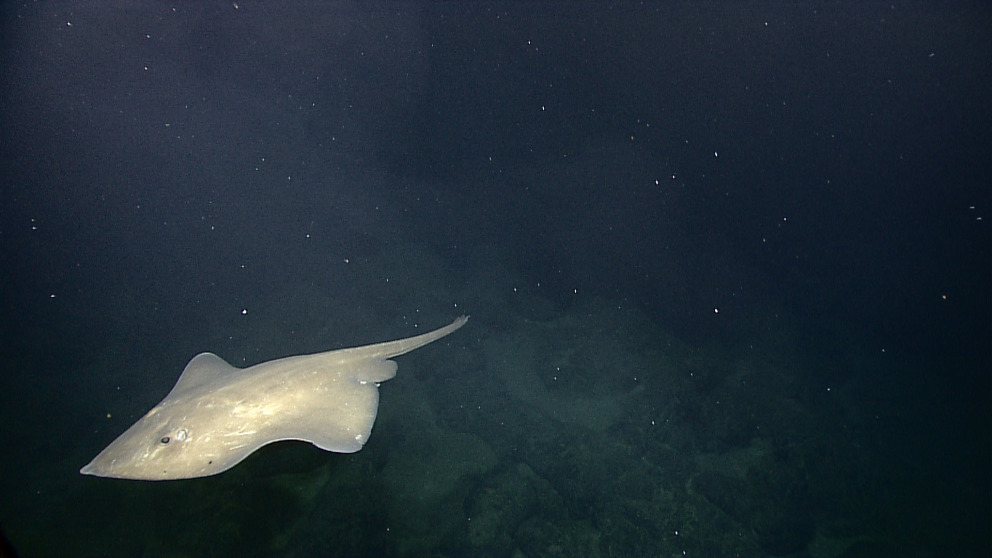Stronger Integration of International Negotiations Needed to Protect the Ocean
06.07.2022
International solutions are needed to protect the ocean. Two sets of regulations currently under development offer an opportunity to expand protections, but a greater degree of alignment between the two must be achieved. In a new scientific article IASS researchers outline how this could be realised. States will meet again in July and August to continue their negotiations.
The ocean plays a key role in sustaining life on our planet. However, existing regulatory frameworks for marine conservation only target individual sectors such as fisheries, mining, or shipping. "These governance regimes are too fragmented to safeguard the integrity of the marine environment in the long term. This is of particular concern with respect to areas beyond national jurisdiction, where pressure on ecosystems is increasing due to both more intensive use of marine resources and climate change," says the study's lead author, Sabine Christiansen.
Ecosystem approach seeks to balance conservation and human use
Far from the coastline, in areas beyond national jurisdiction, two legally distinct areas of regulation exist: on the one hand, the international seabed, the so-called "Area" with its mineral resources, and on the other hand, the water column above it, the “High Seas”. The management of mineral resources in the Area is the responsibility of the International Seabed Authority (ISA), which is currently discussing a set of regulations to enable future exploitation activities. As early as the end of July, member states of the ISA will meet at the organization's headquarters in Kingston, Jamaica, to continue negotiations in this matter.
Parallel to this, multilateral negotiations are taking place on an international agreement for the conservation and sustainable use of marine biodiversity in areas beyond national jurisdiction (the BBNJ treaty ). The fifth and, for the time being, final round of negotiations at the United Nations is scheduled to take place in late August in New York (IGC 5). Despite the far-reaching implications of deep-sea mining for the protection of deep-sea species and habitats, the two negotiation processes have so far proceeded largely separately. In their article, the authors elaborate on options to enhance the interplay of these two processes.
Regional Environmental Management Plans to guide decision-making
The ecosystem approach has been identified as a best-practice for ocean governance. This approach seeks to manage human activities with the aim of maintaining or restoring the health of spatially defined ecosystems. “The management of human activities needs to change: We need an integrated and coherent global governance solution. The ecosystem approach is the most promising of the available options, as it provides a clear framework, but also allows for the development of tailored solutions for specific contexts," explains Christiansen.
Regional Environmental Management Plans, such as those envisaged by the International Seabed Authority for the implementation of its environmental commitments, could play a special role in integrated ocean management. These plans have the potential to support informed decision-making in regions with mining interests to establish thresholds for impacts on affected marine regions. Crucially, the plans seek to balance economic and environmental interests in relation to longer term conservation goals. So far, however, the ISA has neglected to embrace this potential. For example, in a draft Regional Environmental Management Plan currently under consideration for the "Mid-Atlantic Ridge”, an area in the central Atlantic with important hydrothermal vent fields, the interests of mining stakeholders take precedence over the conservation of deep-sea species and habitats.
Enable broad stakeholder participation
An ambitious BBNJ treaty should reinforce and support the implementation of the marine conservation goals and environmental impact assessment standards formulated by the Seabed Authority, the authors urge. The consistent and coherent integration of sectoral, regional, and global goals, standards, and measures would be a major step towards the adoption of an ecosystem-based management approach. Deep-sea mining could then be authorized only to the extent that regional and global environmental quality goals and standards will demonstrably not be compromised. The ecosystem approach also provides for broad-scale stakeholder participation, the ongoing assessment of the environmental impacts of deep-sea mining, and comprehensive risk management in line with the precautionary principle.
Deep-sea mining and its impacts on the marine environment have received considerable attention recently at the G7 Summit in Elmau and at the UN Ocean Conference in Lisbon. The "Ocean Deal" agreed by G7 leaders under Germany’s Presidency includes a commitment to a far-reaching precautionary approach to the potential mining of marine minerals in the Area, with the aim of preventing negative environmental impacts. Several countries went one step further during the UN Ocean Conference, including the Pacific states of Palau and Fiji, as well as Chile, calling for a moratorium on deep-sea mining. French President Emmanuel Macron even called for a legal framework to stop deep-sea mining from going ahead.
Christiansen, S., Durussel, C., Paisano Guilhon e Sá, M., Singh, P., & Unger, S. (2022). Towards an Ecosystem Approach to Management in Areas Beyond National Jurisdiction: REMPs for Deep Seabed Mining and the Proposed BBNJ Instrument. Frontiers in Marine Science, 9: 720146. doi:10.3389/fmars.2022.720146.
Contact

